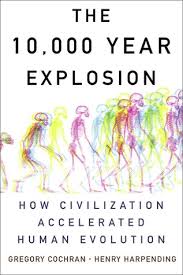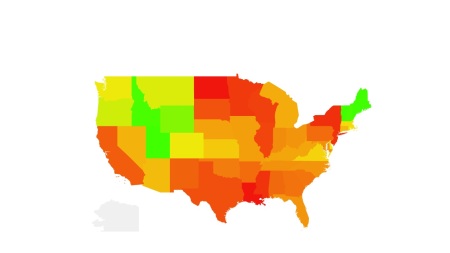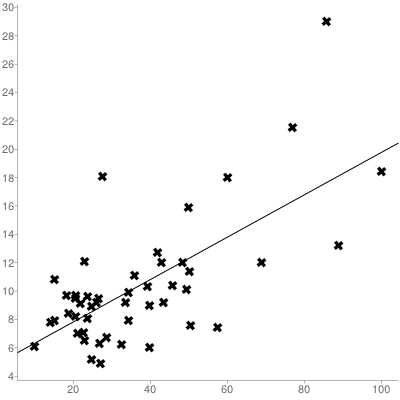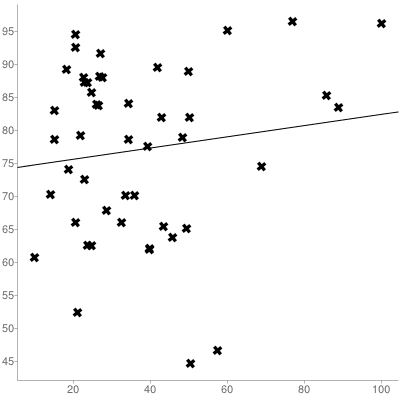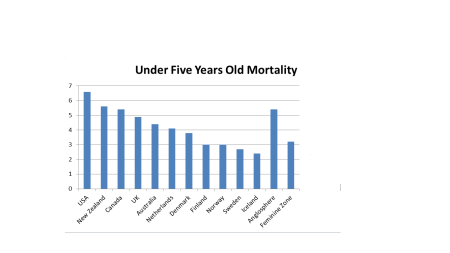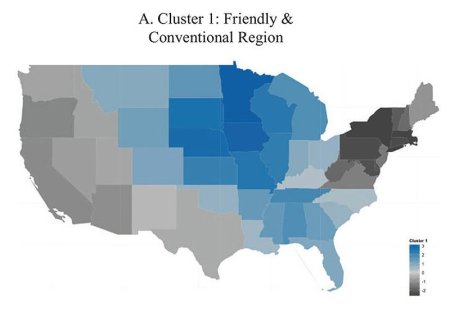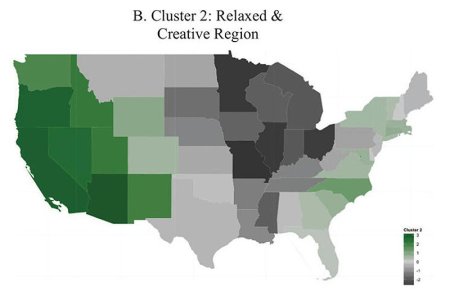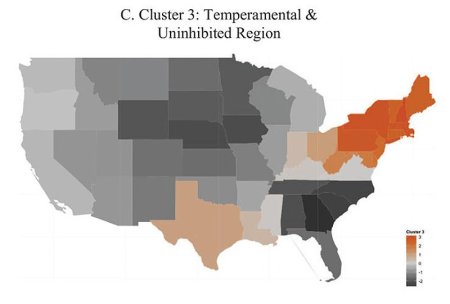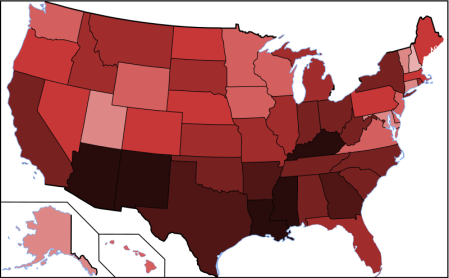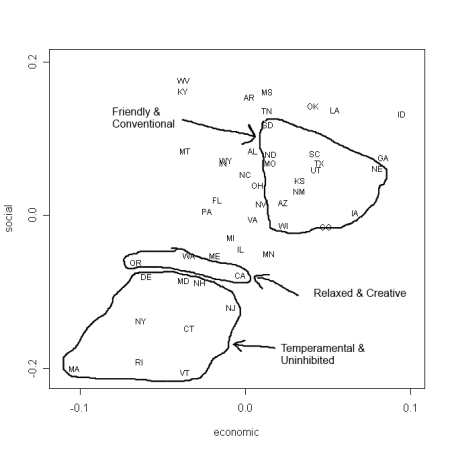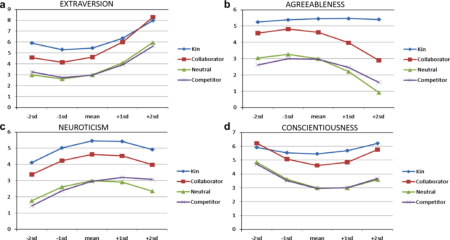
The Bad Boy Allure
There is a widespread notion that girls and women have a thing for bad boys. Sure, they say they like nice guys, who are attentive and caring, who play by the rules, and whom you can trust. But in reality, they prefer the arrogant, self-centered, manipulative guys – the bad boys or jerks.
We find this theme in literature, films and TV shows ranging from the dark attraction of cold-blooded serial killers, the seductive charm of vampires to more light stuff like the TV show The Simpsons, where the straight-A student Lisa falls for the unsophisticated bully Nelson.
This view is also held by the boys and men of the manosphere, an online community about gender issues from a male perspective, inspired by evolutionary psychology, pick-up artistry and personal experiences. Here too the consensus seems to be that chicks dig their jerks, only with the dark, optimistic belief that you can and should learn how to be a jerk, or in their biologically inspired jargon, an alpha male.
While this consensus is intriguing, it’s not necessarily compelling. For one, consensus varies over time. We used to believe in the existence of witches but now that belief might get you a psychiatric diagnosis. And it varies by population. According to PEW, most Buddhists and Hindus embrace the theory of evolution, but only a small minority of Mormons and Jehovah’s Witnesses do so. In short, consensus is no substitute for evidence. And neither is the cynicism of the manosphere, for that matter. So is there any evidence?
Attraction Research
As one might expect, there is plenty of research on what women look for in men, and vice versa. In a huge international and cross-cultural study (possibly the largest of its kind), psychologist David Buss and colleagues asked 10 000 participants what characteristics they desire in a potential marriage partner. Most of the top ten turned out to be personality traits, things like sociability, pleasing disposition, dependability, emotional stability, ambition, refinement/neatness, and intelligence (which not everyone views as a personality trait). All of these were considered more important than things like for instance financial prospects, social status or religious and political background.
But the desirable traits listed above do not paint a picture of a bad boy – or girl for that matter, as the difference between the sexes was very small. In Big Five terms it translates to extraversion, agreeableness, conscientiousness, and lack of neuroticism. The bad boy, however, is not well captured in the Big Five model, but matches the Dark Triad (DT) traits of psychopathy, narcissism, and Machiavellianism. As no test of this triad was included we can’t tell for sure, but correlations between DT and Big Five are positive for extraversion and emotional stability, but negative for agreeableness and conscientiousness. And there is nothing “dark” per se about an extraverted and emotionally stable person. So it’s clear that, these findings can’t support the chicks-dig-jerks theory as correlations fail to match DT, and with “dependability” and “pleasing disposition” as two conspicuous deal breakers.
Besides these desired traits, there is also research showing that people of both genders like those similar to themselves. All Big Five show moderate correlations between how much a person likes a trait in a partner and how much he or she has of that trait. This birds-of-a-feather effect goes beyond personality, as Buss explains,
For nearly every variable that has been examined— from single actions to ethnic and racial status—people seem to select mates who are similar to themselves. Even for physical characteristics such as height, weight, and, astonishingly, nose breadth and earlobe length, couples show positive correlations. Indeed, the only characteristic on which “opposites attract” that has been reliably documented is biological sex: Men tend to be attracted to women and women tend to be attracted to men.
But as both psychologists and members of the manosphere have pointed out, women may want jerks or bad boys for short-term relationships rather than for marriage. So let’s push onwards and explore that possibility as well…
Women’s Flings
In doing so, we immediately hit an obstacle. Because if it is generally true that chicks dig jerks, it would also mean that women in general enjoy short-term relationships. There is, however, a lot of research that says the opposite. Here is some taken mostly from Randy Larsen and David Buss’ book Personality Psychology – Domains of Knowledge About Human Nature (2010) and Buss’ Evolutionary Psychology -The New Science of the Mind (2007),
As far as sexual fantasies goes here is a N=1500 study from last year, showing 83 percent of men having the fantasy of sex with someone other than their partner, as compared to 56 percent for women.
From Wikipedia: The National Health and Social Life Survey found that 4% of married men, 16% of cohabiting men, and 37% of dating men engaged in acts of sexual infidelity compared to 1% of married women, 8% of cohabiting women, and 17% of women in dating relationships (Lalasz & Weigel, 2011) (If someone has a full-text of this article please let me know.)
69 percent of men had solicited a prostitute, less than one percent of the women had done so.
Men report wishing on average 18 sex partners over their lifetime, while women want on average 4.
Four men in a lifetime. That alone gives us a hint of just how uninterested most women must be in short-term relationships – and, as a consequence, the men who provide that type of experience.
Still, some psychologists appear very fond of this idea and are conducting research into the possibility of Dark Triad traits having evolved as a strategy for short-term sexual encounters. And if this is the case they should be attractive to women. So let’s hear them out as well…
Physical Attractiveness
One idea is that women can tell just by looking at Dark Triad men, by facial or other bodily characteristics, that they have some superior genetic qualities. In a study looking into this, psychologist April Bleske-Rechek and colleagues (2008) had 102 participants (51 couples) rate how attractive and sexy they think they are compared to other people. As expected, narcissism scores correlated with how hot participants thought they were. The main finding, though, was that a panel of 17 judges of both sexes, who showed strong consensus in all their ratings, found the narcissist to be no more or less attractive than other participants. This after being shown face pictures. So it’s possible that full body pics would have produced a different result, but the authors claim that facial attractiveness is a good predictor of general attractiveness. At any rate the study lent no support to the idea of facial symmetry, a compelling gaze or whatever, as a visual indication of some biological sexiness.
In another study, psychologists Nicholas Holztman and Michael Strube (2013) looked at the relationship between attractiveness and personality with a special focus on adorned versus unadorned attractiveness as well as effective adornment, which is how much your adornment will improve your attractiveness. Note that effective adornment is not merely a matter of skill as some people use adornment very skilfully for personal expression or according to what is appropriate for the occasion, rather than to make themselves attractive. While in the study mentioned above, Bleske-Rechek controlled for how much participants were smiling and for resource display, previous research has not specifically distinguished between the adorned and unadorned condition.
Holztman & Strube had 111 students full body pictures taken as they entered the lab in their normal clothes, makeup etc, that being the adorned condition, and then dressed in grey clothes with makeup, jewelry, men’s facial hair, and so on, all removed in the unadorned condition. They combined self- and peer ratings of personality, a good way to reduce measurement error, and used students of the opposite sex, not previously acquainted with the participants to rate their attractiveness. In line with Bleske-Rechek’s study, they found very small correlations between unadorned attractiveness and personality, the biggest being 0.23 for extraversion – known as a desired trait for long-term relationships. The other personality trait measures of Big Five, a Dark Triad composite measure as well as its individual scales were all below 0.1. One measure of Narcissistic Personality Disorder (NPD) reached 0.20, so extreme cases of narcissism were on level with regular extraversion.
Again, this is not much to build a chicks-dig-jerks case on, especially as the only link between attractiveness and Dark Triad was a clinical measure, and the size of the correlation was rather modest. But it would be interesting to compare the result with correlations with other clinical measures of things like schizotypy, Borderline Personality Disorder.
Peacocking and Persona
As for the adorned condition, bad boys did slightly better. The Dark Triad composite reached 0.20 and the highest correlation was for NPD at 0.26, with extraversion second at 0.25. (All other Big Five correlations were very low as in the unadorned condition.) Dark Triad was also associated with effective adornment, the ability to enhance attractiveness by adornment, which is no surprise as people with dark traits by definition put a lot of effort into portraying themselves favourably as a way to manipulate and exploit other people.
But again, the effect is not striking and it raises questions about whether women are superficial or easily tricked rather than crazy about Dark Triad people per se. An attractive veneer signals things like physical fitness and material wealth, characteristics that were considered attractive according to Buss’ cross-cultural study mentioned above. So that only means bad boys try to come across as conventionally attractive by displaying some attributes that they may or may not possess. Indeed, there would be little point of hiding their person behind a veneer if it was the person that was the attraction. And yet, many Dark Triad people go to great length to not only create a physical veneer, but also a psychological one, a persona or mask that sometimes contrasts sharply against their real personality. As an example, consider crime author Ann Rule’s description of psychopathic serial killer Ted Bundy, a man she had spent a long time with before discovering who he really was,
Ted’s treatment of me was the kind of old-world gallantry that he invariably showed toward any woman I ever saw him with, and I found it appealing. He always insisted on seeing me safely to my car when my shift at the Crisis Clinic was over in the wee hours of the morning. He stood by until I was safely inside my car, doors locked and engine started, waving to me as I headed for home twenty miles away. He often told me, “Be careful. I don’t want anything to happen to you.”
Compared to my old friends, the Seattle homicide detectives, who routinely saw me leave their offices after a night’s interviewing, at midnight in downtown Seattle with a laughing, “We’ll watch out the window and if anyone mugs you, we’ll call 911,” Ted was a like a knight in shining armor.
So why would a bad boy impersonate a nice guy to attract women when it’s the bad boy they want?
A Flirt with the Devil?
But still. That’s anecdotal, and other anecdotal information goes in the other direction. As popular manosphere blogger Heartiste so charmingly puts it,
I’ve never gotten more radical, more INSTANT, positive results when hitting on cute babes than when I deliberately amped up my asshole vibe. I mean, to the point of nearly insulting them. Eyes brightened and sparkled, legs uncrossed, fingertips danced all over my arms. And these were the upper class smart chicks with multiple degrees.
Can we rule out that women are attracted to the bad boys because they are bad? It could be the thrill of a dangerous man, or they may think of these guys as the alpha male winners they see themselves as.
There are studies on this too. One is by psychologists John Rautmann and Gerald Kolar (2013), and another one by Gregory Carter and colleagues (2014). Both eliminated the veneer of physical appearance, resource display etc by using vignettes, fictional descriptions based on the so-called Dirty Dozen measure, a short Dark Triad composite questionnaire. In order to see if the vignettes were perceived as Dark Triad and to control for other traits, both studies also had participants rank the vignette characters on the Big Five. Overall, these ratings were as expected, high on extraversion, lower on agreeableness, neuroticism and conscientiousness while more or less unrelated to openness. (There were some discrepancies however, more on that later.)
Rautmann & Kolar created vignette characters separately for each of the three DT traits which participants rated on various types of attractiveness – likeability, friendship material, general attractiveness, as a potential partner in long- and short-term sexual relationships. It turned out that these characters rated fairly low on most scales. All but two ratings were below the neutral/disinterested midpoint of 2 (going from 0 to 4) of the five point Likert scale. These were for narcissists and Machiavellians on short-term sexual relationship, scoring 2.42 and 2.05 respectively, the latter being negligibly over the neutral rating. Or as the authors sum it up – “Narcisssists are perceived as hot, Machiavellians and psychopaths not.”
This might look as a win for the chicks-dig-jerks theory, at least in the case of narcissists. But scoring 2.42 on a scale from 0 to 4 is not a striking result. The authors also concede that the vignettes don’t take into account that DT traits are intercorrelated. This means that real life narcissists will be somewhat psychopathic and Machiavellian as well, which should reduce their modest attractiveness ratings even further. Then there is the Big Five rating which showed that participants viewed narcissists as more normal and, as a consequence, less bad or dark, than psychopaths and Machiavellians. In terms of Big Five correlates it was the psychopaths who rated darkest, scoring lower on neuroticism and agreeableness, suggestive of a cold-blooded and hostile person. Interestingly, psychopaths also scored lowest on attractiveness – including the scale for short-term sexual interest. Again, not good news for this theory.
At Least Sexier Than Nervous Geeks?
Carter and colleagues, however, got a different result. They created a composite DT vignette character, rather than one for each part of the triad, and this character rated as relatively attractive. And unlike Rautmann & Kolar, Carter introduced a control character too so that we can see how attractive the DT vignette was compared to an average guy. Well, that would have been the obvious way to do it, but instead they went with a control character that simply lacked all DT traits. And as traits tend to be normally distributed, meaning most people are close to the average, the control in this study is just as rare and extreme person as the Dark Triad person. What kind of person?
Judging by the Big Five traits that participants rated the control with, this was an introverted, neurotic and conscientious person, or in more plain English, an unsociable, nervous, geeky guy. Not that I have any evidence that such a person would score as less attractive than most personalities, but I think we can agree that it’s reasonable to suspect that correlations between DT personality and attractiveness may have been inflated in this way. Even so, the correlation was not more than 0.37 as compared with -0.35 for neuroticism and 0.33 for extraversion. The authors also concede that the general attractiveness rating used means they know little of the sexual competitiveness of the DT personality, but they still try to imply that they do,
…we are not asserting that female respondents who rated the DT character as attractive would necessarily be willing to engage in sex with them. However, our findings do indicate that the DT personality is attractive to our participants. This in turn supports previous work that has suggested DT men are more sexually successful.
The “previous work” being based on self-reports from men who by definition are boastful and self-enhancing. That’s somewhat like two drunks leaning on each other to stay upright. Then, in a paper only a month later, the Carter reconsiders the whole idea of DT as an evolved strategy for male short-term mating when he found that women with subclinical DT traits are about as common as men,
We propose that focus on DT as a male adaptation to short-term mating has been overstated and that men’s greater preference for casual sexual encounters is not explained by DT traits.
To conclude, all research I’ve found on this fails to support the hypothesis that women like bad boys, be it long-term or short-term. It echoes earlier research showing extraversion and emotional stability to be attractive traits but does nothing to establish an effect of the Dark Triad beyond those correlates.
The Sexiest Men Alive

Henry Cavill. Women only like him because they can sense that his a complete jerk.
Still, science is rarely perfect, especially not soft science. Sometimes constructs and study designs can fail to model what takes place in the real world. Perhaps we are better off looking to popular culture for answers? It’s not controversial to say that we live in sexualized celebrity culture. It’s not uncommon for pop culture media to rate celebrities on how attractive or sexy they are. I’ve looked at some of these lists of highly desired men to see if they can shed some light on this question. First off, here is Glamour Magazine (UK) reader’s vote on sexiest men 2013 (95K voters),
- Henry Cavill
- Robert Pattinson
- Liam Hemsworth
- Tom Hiddleston
- Benedict Cumberbatch
- Harry Styles
- Chris Hemsworth
- Idris Elba
- Jamie Campbell Bower
- Justin Bieber
As an, admittedly limited, bad boy indicator, I looked at the “controversy”, “personal life”, and “public image” sections on Wikipedia entries for these boys and men. I could not find dirt on anyone but Justin Bieber, but as his stardom preceded his controversial behavior that’s irrelevant. If anything his star appears to have waned as his bad boy image emerged.
Next, People Magazine’s Sexiest Man Alive 2013, not voted but with 46 million readers and ad revenues of around a billion dollars yearly, they probably know something about what celeb starved readers like,
- Adam Levine
- Idris Elba
- Luke Bryan
- Jimmy Fallon
- Bruno Mars
- Jonathan and Drew Scott (identical twins)
- Justin Timberlake
- Chris Pine
- Pharrell Williams
- Ronan Farrow
Same story here. Adam Levine has had some drug problems in his adolescence but is now sober and a successful musician and entrepreneur who is also committed to helping children with ADHD. Chris Pine has one DUI but it’s from this year so as with Bieber it precedes his celebrity status. There may of course still be some controversy to be found if you dig a little deeper, but digging deep is not what celebrity culture is about. If the popularity of these men depended on a bad boy image you wouldn’t have to look further than Wikipedia to find evidence of it.

One Direction. They may seem dangerous but girls love them.
Then you have the boy bands – intentionally designed to appeal to girls and younger women. This genre should be overflowing with bad boys. But has there ever been a boy band of bad boys? Or even a non-cute boy band?
If girls and women really like their jerks so much, why then would they favor men who don’t have a hint of a mean streak, when voting in polls, buying music, watching movies or attending concerts? To convey a socially acceptable persona? We’re talking about teenage girls here. It seems infinitely more plausible to assume that they spend time and money on the men they do find attractive – and they’re not Dark Triad. They appear to share the DTs extraversion and emotional stability, but there is just nothing dark per se about them.
So again, we find no support for the theory. And yet people seem convinced of the bad boy allure. It would seem the real mystery then is not why chicks dig jerks, but why this belief is so popular despite of the overwhelming lack of empirical evidence, or evidence to the contrary.
Male Hypervigilance
I haven’t found any research on this particular issue, but I have found some stuff on related ideas that may explain this belief. First, Dark Triad men exist and pursuit short-term sexual relationships. To say, as Carter did in his retraction, “men’s greater preference for casual sexual encounters is not explained by DT traits” is going too far in the other direction. By all accounts these men are players, just not all that successful at what they do. But even so, they constitute a danger to other men, and men who disregard this danger may have been weeded out by natural selection. Because from an evolutionary perspective, the worst thing you can do, short of getting yourself killed, is to raise someone else’s children. Still, this doesn’t answer why men overestimate the bad boys’ attraction on women. Wouldn’t a realistic assessment lead to the highest fitness? Not necessarily. Evolutionary theorists have a concept called agent detection, according to the Wikipedia entry defined as,
“…the inclination for animals and humans to presume the purposeful intervention of a sentient or intelligent agent in situations that may or may not involve one.”
Assuming there is someone out there, an enemy, a tiger or some other danger will be a relatively little cost compared to the risk of assuming it was just the wind. Like a motion detector that will go off regardless of whether it’s a cat or a burglar on your lawn. Better safe than sorry, at least when the cost of being sorry is sufficiently high.
This agent detection mechanism should apply to any situation in which hypervigilance can pay off due to potentially high costs. And raising another man’s child will drastically reduce your fitness, so being overly suspicious may well pay off.
A related topic that lends some support to this theory is that of paternity fraud. According to an article in Discover Magazine by biologist and science writer Razib Khan, estimates of false paternity among the public is very high, ranging from 10 to 30 percent. He contrasts this with a survey of the research in this field which has paternity fraud at 2-3 percent among men with relatively strong paternity confidence (and even lower among Northwest Europeans and Jews). For men with lower confidence who have decided to take a test to settle the issue, which must be a pretty strong level of suspicion, a full 70 percent are still proven wrong.
As Khan argues, this may relate to agent detection, the logic of erring on the side of caution when a lot is at stake. It seems very likely that the chicks-dig-jerks idea is part of this hypervigilance since paternity uncertainty means worrying some smug bastard had his way with your woman, and unless she’s a complete whore it must be the man who made it happen, someone who is actively pursuing short-term sex, who sees himself as a womanizer and brags about it. Someone like a Dark Triad man. The hypervigilance will then be post-hoc rationalized as being due to the fact that chicks dig jerks.
Well, that’s my theory any way, and sad if true, since at least some of these men think of their delusion as an almost heroic form of realism. Unlike all the saps and phonies (the betas in manosphere parlance) who buy the sugar-coated, fluffy crap about human nature, they believe they alone see things the way they really are. Is there a way to snap out of that? I’m not so sure.




 Posted by Staffan
Posted by Staffan 


